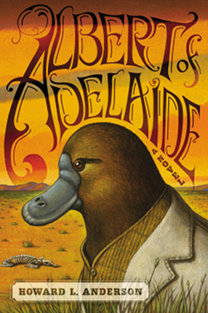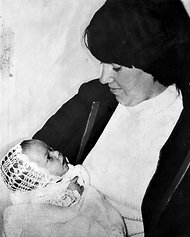dingoes
Review: 'Albert of Adelaide', by Howard L. Anderson
Posted by Fred on Tue 4 Sep 2012 - 15:15 Australia today is not what it used to be. Civilization has settled into the southeast of the country, roughly from Adelaide to Sydney. Imported animals like sheep, foxes, and rabbits have replaced the older native animals. Kangaroos and wallabies are tolerated as “cute”, but other native animals have been relegated to zoos where they are penned in and stared at by humans. But there is a legend that somewhere in Australia, far from the human-settled southeast, isolated in the vast desert, there is a place where things haven’t changed and the original animal inhabitants live freely.
Australia today is not what it used to be. Civilization has settled into the southeast of the country, roughly from Adelaide to Sydney. Imported animals like sheep, foxes, and rabbits have replaced the older native animals. Kangaroos and wallabies are tolerated as “cute”, but other native animals have been relegated to zoos where they are penned in and stared at by humans. But there is a legend that somewhere in Australia, far from the human-settled southeast, isolated in the vast desert, there is a place where things haven’t changed and the original animal inhabitants live freely.
In the early morning of a day long after the war, a small figure walked slowly along one of the winding tracks somewhere to the east of Tennant Creek. On close examination, the figure didn’t look any different from most of his kind. He was about two feet tall and covered with short brown fur. He had a short, thick tail that dragged the ground when he walked upright and a ducklike bill where any other animal would have a nose.
The only thing that set Albert apart from any other platypus was that he was carrying an empty soft drink bottle. It was his possession of a bottle, coupled with the fact that he was hundreds of miles north of any running water, that made him different. (p. 2)
Hachette Book Group/Twelve, July 2012, hardcover $24.99 (viii + 225 pages; map by Jim McMahon), Kindle $12.99.
Coroner confirms it; dingoes ate the baby
Posted by crossaffliction on Tue 12 Jun 2012 - 18:43 After thirty years, it turns out, yes, dingoes really did eat that baby. At least that was the finding of Australian coroner Elizabeth Morris today, as quoted by the New York Times: "The cause of her death was a result of being taken by a dingo."
After thirty years, it turns out, yes, dingoes really did eat that baby. At least that was the finding of Australian coroner Elizabeth Morris today, as quoted by the New York Times: "The cause of her death was a result of being taken by a dingo."
The bizarre disappearance from Ayer’s Rock of infant Azaria Chamberlain in 1980 led to her mother, Lindy, being convicted of murder in 1982, despite Lindy’s claims that dingoes had killed the baby. When Azaria’s jacket was found four years later near dingo dens, however, Lindy was released. Finally, this year, a fourth inquest was taken.